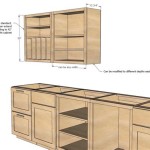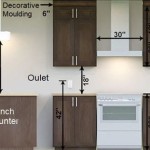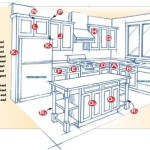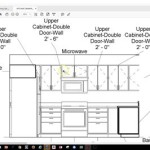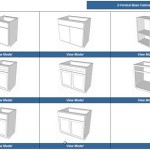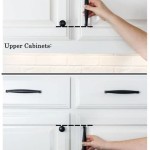How to Cut Crown Molding Above Kitchen Cabinets
Crown molding is a decorative element that can add a touch of elegance and sophistication to any kitchen. It can be used to frame the cabinets, create a focal point, or simply add some visual interest to the space. However, cutting crown molding above kitchen cabinets can be a challenging task, especially if you're not familiar with the process. In this article, we'll provide you with step-by-step instructions on how to cut crown molding above kitchen cabinets, as well as some helpful tips and tricks to make the job easier.
Step 1: Measure the Length of the Crown Molding
The first step is to measure the length of the crown molding you'll need. To do this, use a measuring tape to measure the distance from the inside edge of one cabinet to the inside edge of the other cabinet. Add 2 inches to the measurement to account for the overlap at the corners.
Step 2: Cut the Crown Molding at a 45-Degree Angle
Once you have the length of the crown molding, you need to cut it at a 45-degree angle. To do this, use a miter saw or a miter box. If you're using a miter saw, set the blade to a 45-degree angle and make sure the crown molding is positioned correctly in the saw. If you're using a miter box, simply insert the crown molding into the miter box and saw along the 45-degree angle.
Step 3: Dry Fit the Crown Molding
Before you apply any adhesive, it's important to dry fit the crown molding to make sure it fits properly. To do this, simply place the crown molding on top of the cabinets and align it with the edges. Make sure the mitered corners fit together snugly.
Step 4: Apply Adhesive and Install the Crown Molding
Once you're satisfied with the fit of the crown molding, you can apply the adhesive. Use a construction adhesive that is specifically designed for crown molding. Apply a thin bead of adhesive to the top of the cabinets and the back of the crown molding. Then, carefully lift the crown molding into place and press it firmly against the cabinets. Use a level to make sure the crown molding is level.
Step 5: Secure the Crown Molding
Once the crown molding is in place, you need to secure it with nails or screws. Use 1-inch finishing nails or screws that are countersunk below the surface of the molding. Space the nails or screws about every 12 inches. Once the crown molding is secure, you can fill in the nail or screw holes with wood putty and paint the crown molding to match the cabinets.
Tips and Tricks for Cutting Crown Molding Above Kitchen Cabinets
- Use a sharp blade on your miter saw or miter box.
- Make sure the crown molding is securely clamped in place before you cut it.
- Dry fit the crown molding before you apply any adhesive.
- Use a level to make sure the crown molding is level.
- Countersink the nails or screws below the surface of the crown molding.
- Fill in the nail or screw holes with wood putty.
- Paint the crown molding to match the cabinets.

How To Install Crown Molding On Cabinets Young House Love

How To Enclose The Space Above Kitchen Cabinets Angela Marie Made

How To Install Crown Molding On Cabinets Young House Love

Adding Crown Moulding To Wall Kitchen Cabinets Momplex Vanilla Ana White

Install Trim Above Cabinets Madness Method Kitchen Cabinet Crown Molding

Closing The Space Above Kitchen Cabinets Remodelando La Casa

Diy Kitchen Cabinet Upgrade With Paint And Crown Molding

Diy Kitchen Cabinet Upgrade With Paint And Crown Molding

Crown Molding For Kitchen Cabinets Fine Homebuilding

How To Install Crown Molding On Kitchen Cabinets
Related Posts

